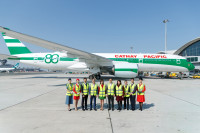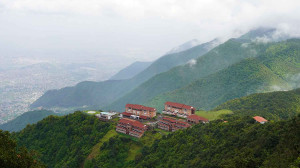Money
Jumla suffers massive milk deficit
A Nepali consumes 72 litres of milk and dairy products annually, while the recommended requirement is 91 litres. But in Jumla, the per capita milk consumption is only 4 litres.
DB Budha
Almost every home in Jumla rears cows and buffaloes but the per capita availability of milk is one of the lowest in the country.
According to the statistics of the Livestock Services Office, Jumla in western Nepal, has around 18,300 houses, and among them, 17,411 have cows and buffaloes.
The annual milk production in the district stands at around 471 tonnes. The population of Jumla is over 119,000.
In Nepal, a 2020 study estimated that a Nepali consumes 72 litres of milk and dairy products annually, while the recommended requirement is 91 litres.
But in Jumla, the per capita milk consumption is only 4 litres.
Gyanendra Budha Thapa, chief of the office, said that the district also brings milk from Surkhet and Nepalgunj which is around 20 tonnes annually.
“It is mostly brought during the winter—the lean season that usually starts in November and continues until March,” say dairy farmers.
There are five dairies in Khalanga, the district headquarters, where farmers sell their milk.
“The amount of milk farmers supply is insufficient to fulfil the demand of the district,” said Hastana Neupane, who runs a local dairy—Hastana.
Karna Bahadur Budha, who runs a tea shop, said milk demand spikes as people drink more tea in winter.
“Most of my customers prefer milk tea,” said Budha.
Jaibir Kami, a local, believes the local governments should be more concerned to increase milk production in the district.
“Despite almost every house having a cow or a buffalo, they have not been able to fulfil the district’s demand for milk,” said Kami.
Farmer Devi Prasad Pandey of Guthichaur Rural Municipality-4 agrees with Kami.
“Commercial dairy farming would help youth find a decent source of income at home and prevent them from going abroad for employment or seeking government jobs.”
Pandey has two buffaloes. He supplies 8 litres of milk daily to his customers' door in Khalanga.
Pandey walks for 2 hours to Khalanga from his home every day to sell milk. “I make around Rs750 a day,” he said.
The price of milk is Rs90 per litre in the district.
“The milk production is low here due to the lack of grazing fields,” Pandey added.
Maya Devi Pandey, another farmer in the area, said she earns Rs10,000 per month by selling milk.
“It is my main source of income,” she said. “ I have made as much as Rs22,000 a month when milk production increases because of abundant fodder, especially from August to November.”
“It is a lucrative profession as we get a decent price for milk and it is not that difficult to rear buffaloes,” said Maya Devi. But she shared the same concern as Devi Prasad.
“Farmers won’t be able to fulfil the demand unless we start commercial dairy farming,” she said.
Budha Thapa of the Livestock Services Office agrees with the farmers' concern.
“We cannot be self-sufficient in milk without commercial production,” said Budha Thapa.
“We don’t have data on the exact amount of milk being imported in the district.”
“There needs to be more investment if we want local farmers to increase the milk production in the district,” Budha Thapa added. “The Livestock Services Office has allocated Rs4.7 million for promoting animal husbandry in the current fiscal year.”
The lack of animal technicians has also affected cattle rearing in the district. There are only 35 technicians for the entire district.




 7.98°C Kathmandu
7.98°C Kathmandu















